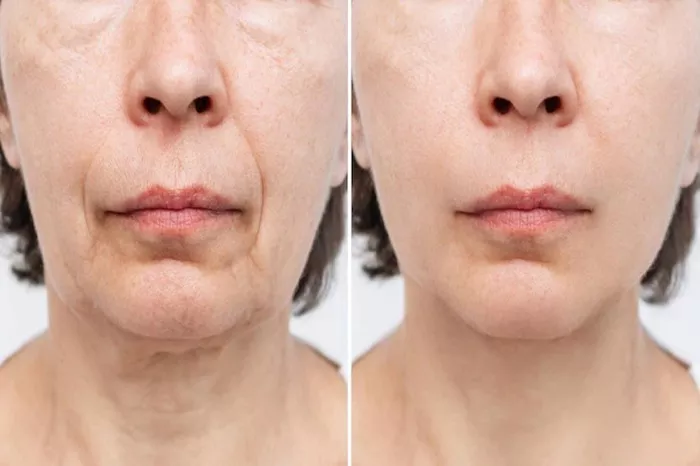Wrinkles are a natural part of aging, but many individuals seek ways to minimize their appearance for a more youthful and vibrant complexion. While surgical procedures like facelifts and brow lifts offer long-lasting results, not everyone is ready to undergo such invasive treatments. Fortunately, there are several non-surgical options available that can effectively reduce the appearance of wrinkles without the need for surgery. In this article, we’ll explore five of the most popular non-surgical treatments for face wrinkles.
1. Botox Injections
Botox, short for Botulinum toxin, is perhaps one of the most well-known non-surgical treatments for wrinkles. It works by temporarily paralyzing the muscles responsible for causing wrinkles, such as frown lines and crow’s feet. During the procedure, a small amount of Botox is injected into targeted areas of the face using a fine needle.
The effects of Botox typically last between three to six months, after which additional injections may be needed to maintain results. Some individuals may experience mild discomfort or bruising at the injection site, but these side effects are usually temporary.
Botox is a popular choice for individuals seeking quick and relatively painless wrinkle reduction with minimal downtime. However, it’s important to choose a qualified and experienced practitioner to ensure safe and effective results.
2. Dermal Fillers
Dermal fillers, also known as soft tissue fillers or wrinkle fillers, are injectable substances used to plump up and add volume to areas of the face affected by wrinkles and fine lines. Unlike Botox, which targets muscle contractions, dermal fillers work by filling in wrinkles and restoring lost volume to the skin.
Common types of dermal fillers include hyaluronic acid-based fillers, such as Juvederm and Restylane, as well as calcium hydroxylapatite and poly-L-lactic acid fillers. Each type of filler has its own unique properties and is suited for different areas of the face.
Dermal filler injections are typically quick and relatively painless, with results lasting anywhere from six months to two years depending on the type of filler used. Side effects may include temporary redness, swelling, and bruising at the injection site.
3. Chemical Peels
Chemical peels are a non-invasive cosmetic treatment that involves applying a chemical solution to the skin to exfoliate dead skin cells and stimulate collagen production. This process helps improve the appearance of wrinkles, fine lines, and uneven skin tone, resulting in smoother and more youthful-looking skin.
There are different types of chemical peels available, ranging from superficial peels that require little to no downtime to deeper peels that may cause peeling and redness for several days. The type of peel recommended will depend on the severity of the wrinkles and the desired outcome.
Chemical peels are typically performed in a series of treatments for optimal results, with maintenance treatments recommended every few months. While chemical peels are generally safe, they may not be suitable for individuals with certain skin conditions or sensitivities.
See also: How to reduce deep wrinkles around mouth?
4. Laser Resurfacing
Laser resurfacing is a non-surgical treatment that uses laser technology to improve the appearance of wrinkles, scars, and other skin imperfections. During the procedure, a laser is used to remove the outer layer of skin, stimulating collagen production and promoting the growth of new, healthy skin cells.
There are two main types of laser resurfacing: ablative and non-ablative. Ablative laser resurfacing removes thin layers of skin, resulting in more dramatic results but requiring a longer recovery time. Non-ablative laser resurfacing, on the other hand, targets the underlying layers of skin without damaging the surface, resulting in less downtime but more gradual results.
Laser resurfacing can effectively reduce the appearance of wrinkles and improve skin texture, but multiple treatments may be needed to achieve optimal results. Side effects may include temporary redness, swelling, and discomfort, but these usually subside within a few days.
5. Microdermabrasion
Microdermabrasion is a non-invasive exfoliating treatment that removes dead skin cells and stimulates collagen production to improve the appearance of wrinkles, fine lines, and other skin imperfections. During the procedure, a handheld device is used to gently sand away the outer layer of skin, revealing smoother and more radiant-looking skin underneath.
Microdermabrasion is a quick and painless treatment that can be performed in-office with little to no downtime. While results are typically noticeable after a single treatment, a series of sessions may be recommended for optimal results.
Microdermabrasion is suitable for all skin types and can be used to treat a variety of skin concerns, including wrinkles, acne scars, and hyperpigmentation. However, it may not be suitable for individuals with certain skin conditions or sensitivities.
Conclusion
In conclusion, non-surgical treatments offer a safe and effective way to reduce the appearance of face wrinkles without the need for invasive surgery. Whether you opt for Botox injections, dermal fillers, chemical peels, laser resurfacing, or microdermabrasion, there are plenty of options available to help you achieve smoother and more youthful-looking skin. Be sure to consult with a qualified and experienced practitioner to determine which treatment is right for you.
Related topics:
How to use nuface wrinkle reducer: A Step-by-Step Guide
What to do for wrinkle free skin?
How to use wunderlift 60 second wrinkle reducer?


